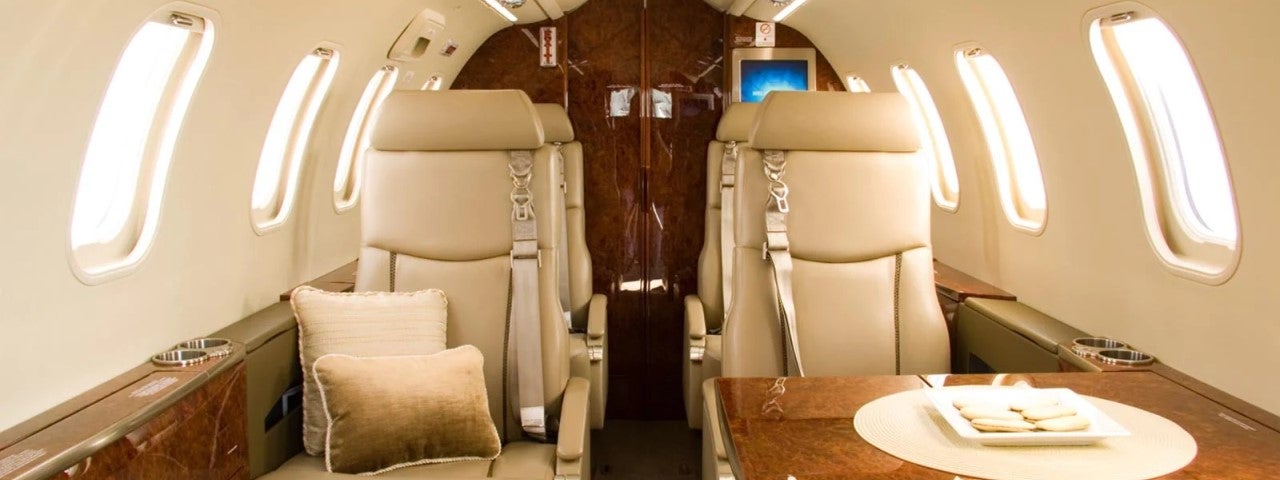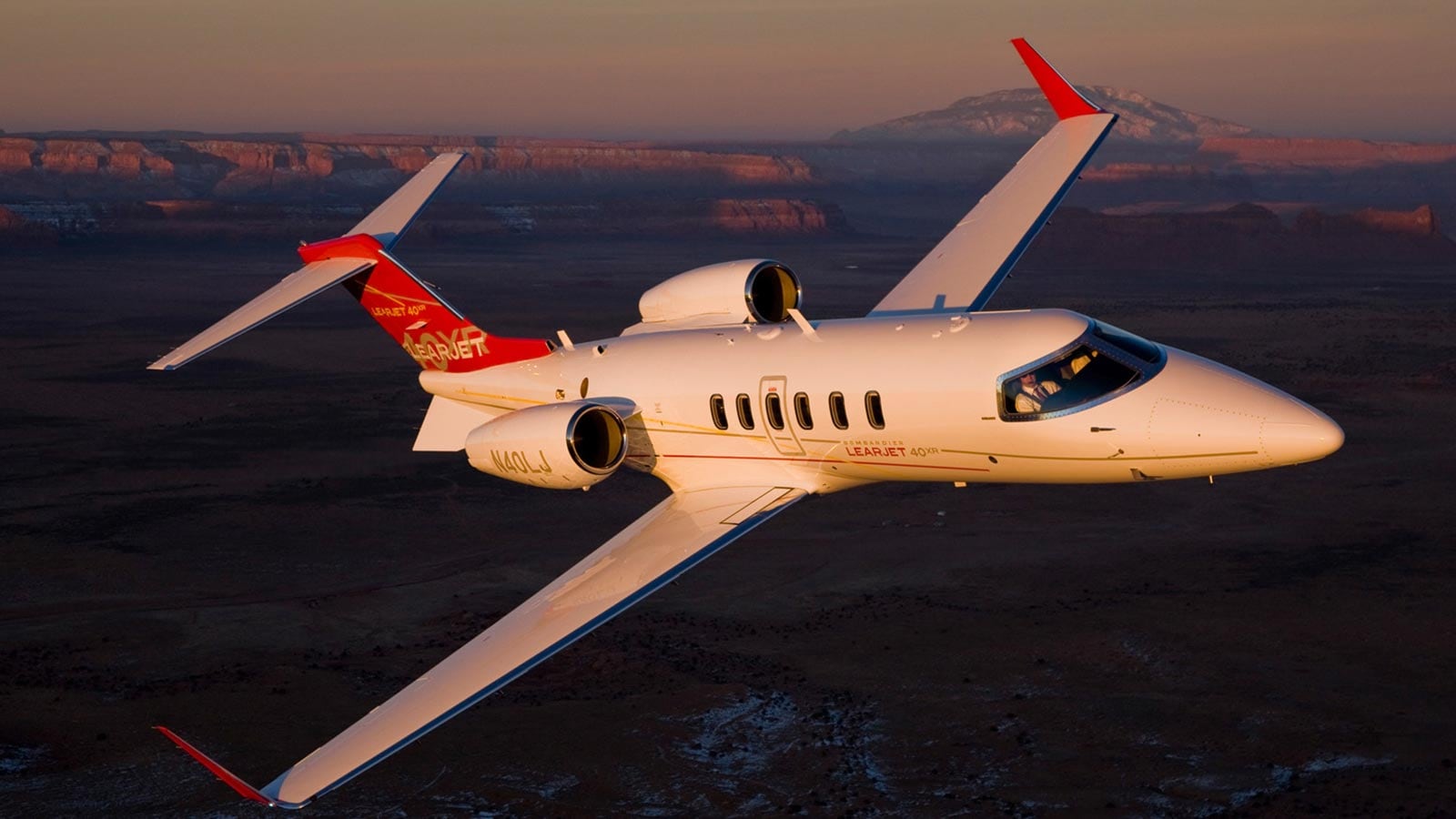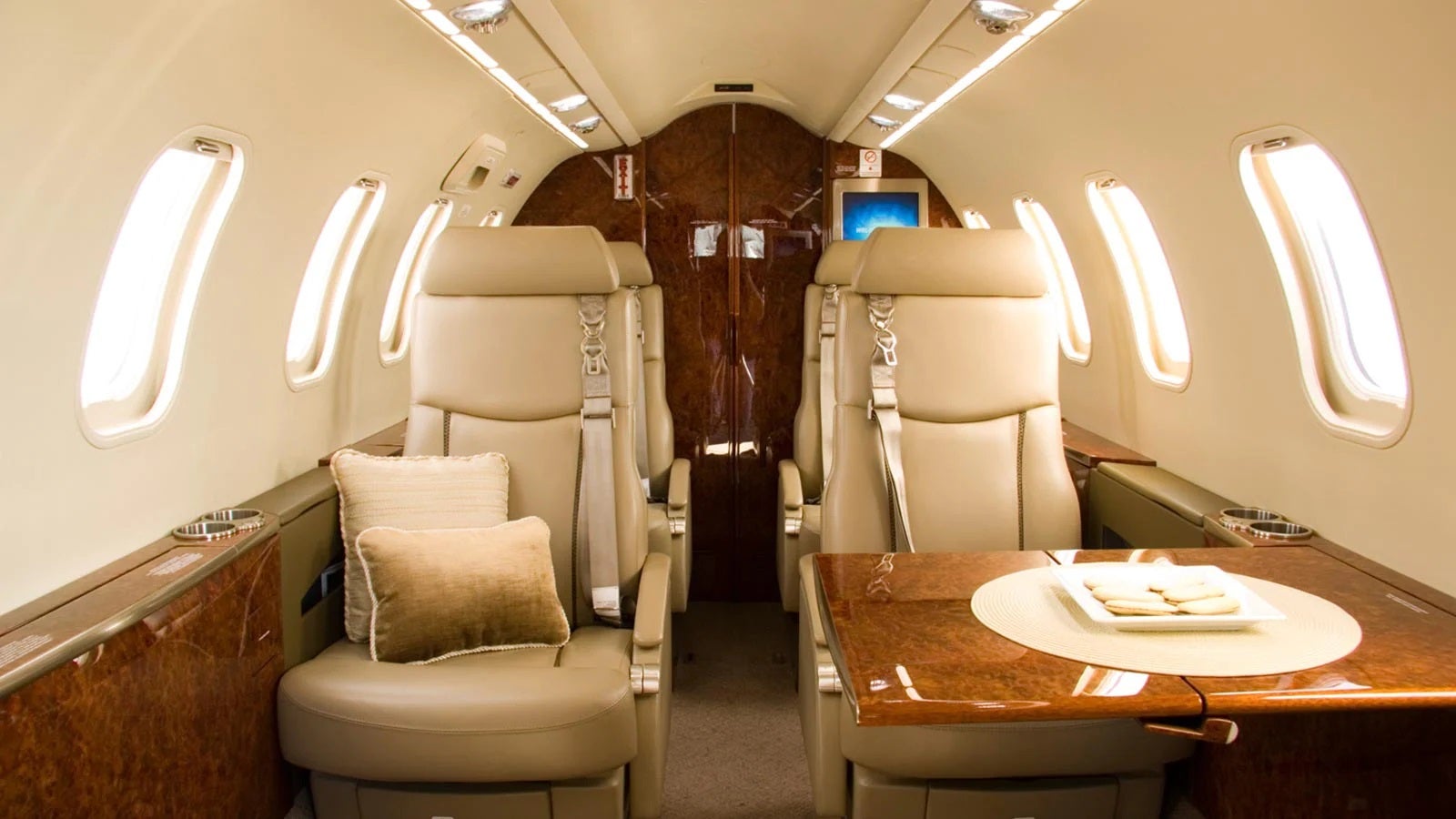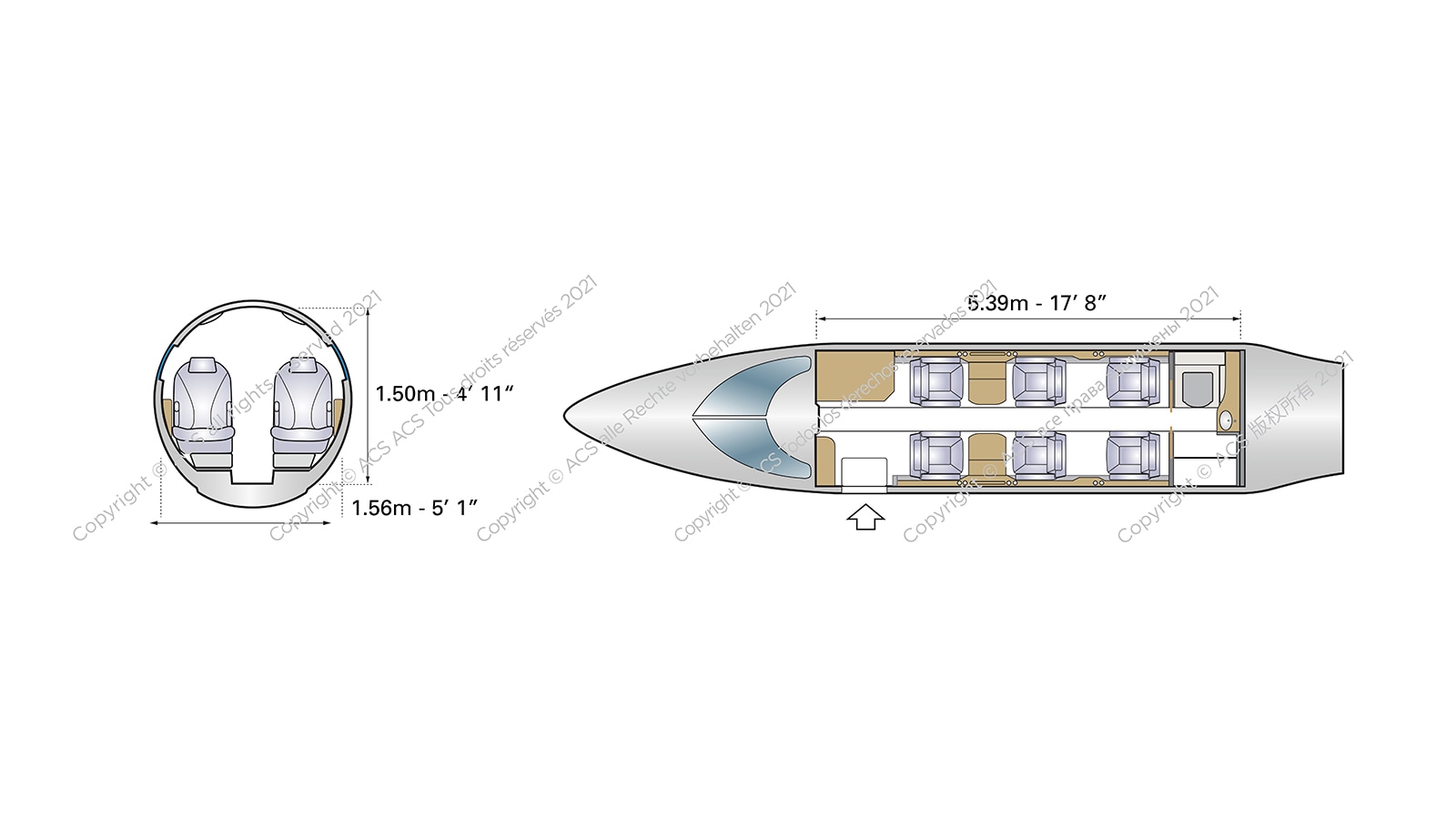BOMBARDIER LEARJET 40XR
- Passengers 6
The Bombardier Learjet 40XR is an upgrade of the popular Learjet 40. The aircraft retains its predecessor’s spacious cabin but has a longer range, making it an extremely high performer in the light jet class.
About this aircraft
- The Learjet 40XR was first delivered in 2005, just a year after the original Learjet 40.
- The interior typically accommodates six passengers, with an extra seat in the enclosed lavatory if required.
- The baggage hold is generous for an aircraft of this size, with space for around six suitcases.
- The Learjet 40XR can fly nonstop from New York to Miami, London to Milan, Chicago to San Francisco and Singapore to Hong Kong.
- Production of the Bombardier Learjet 40XR ceased in 2012.
The Bombardier Learjet 40XR is renowned for its long range, comparatively large cabin and impressive range-to-payload flexibility.
Interior design

Like the 40, the Bombardier Learjet 40XR has a spacious cabin that feels like that of a midsize jet. A typical layout features six slide/swivel reclining passenger seats in a forward club-four configuration, followed by two forward-facing seats.
There’s slightly more legroom on the Learjet 40XR than the larger Learjet 45. Fold-out tables deploy from cabin sidewalls, while a large lavatory with sink and 15ft3 wardrobe can be found in the aft. Some aircraft have entertainment monitors in the front and rear.
Below is a standard configuration found onboard the Bombardier Learjet 40XR.

Interesting facts to learn before you fly
- The Learjet 40XR has a faster cruise speed and greater range than the Cessna Citation Encore.
- The key difference between the Learjet 40 and 40XR are the latter’s Honeywell TFE731-20BR engines.
- The 40XR also has around 330 km more range and an increased takeoff weight of 650 lbs.
Technological features
Despite the Learjet 40XR’s high speeds, it offers relatively economical fuel consumption thanks to an aerodynamic design with drag-reducing winglets and two fuel-efficient turbofan engines delivering 3,500 pounds of thrust each.
Inside, the Learjet 40XR features the same Honeywell Primus 1000 avionics as the 40, as well as a Universal UNS-1E flight management system with embedded GPS receiver.
History
Succeeding the Learjet 45 and addressing the shortcomings of the earlier Learjet 31A, the Learjet 40’s fuselage is two feet shorter than its predecessor’s and its fuel tank holds 100 gallons less. Despite this, the cabin is larger than those of its competitors. The first prototype flew in 2002 and the aircraft was first introduced in 2004.
The Learjet 45XR was released a year later with new Honeywell TFE731-20BR engines, which were tweaked to reduce balanced field length at higher temperatures and improve the time to climb and high-speed cruise. Many 40s have since been converted to 40XRs, with engines designated TFE731-BR. Production of the Learjet 40XR ceased in 2012.
Manufacturer
Bombardier Aviation (formerly Bombardier Aerospace) manufactures business, commercial and specialised aircraft. The company began with the acquisition of several established aviation companies, starting with Canadair in 1986 and followed by Short Brothers in 1989, Learjet in 1990 and Boeing subsidiary De Havilland Aircraft of Canada in 1992.
Following commercial aviation partnerships with Chinese state-owned manufacturer Comac and multinational aerospace corporation Airbus, Bombardier eventually sold de Havilland and its aerostructures division to focus solely on business aircraft.
Headquartered in Montreal, Canada, today Bombardier has over 60,000 employees and is a leading global manufacturer of aircraft and trains with sites in 25 countries.
Cost
A Learjet 40XR can cost between $3 and $4 million (USD).
Charter rates
Charter rates for the Bombardier Learjet 40XR can vary greatly depending on the length of the journey you have planned, as well as the airports you decide to fly in and out of.
Wet lease rates
ACMI (Aircraft, Crew, Maintenance, Insurance) wet lease rates for the Bombardier Learjet 40XR can vary depending on the age of the aircraft, length of the lease term, the number of block hours being guaranteed and the average cycle ratio.


